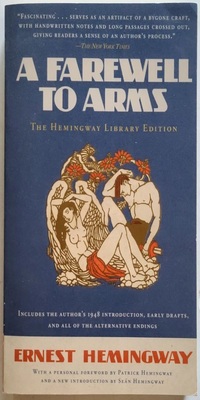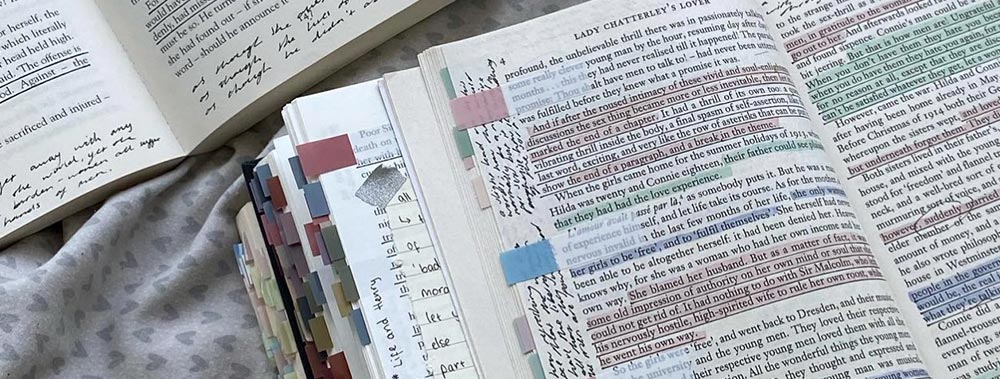A Farewell to Arms: Summary, Plot, Characters, Literary Analysis & More
“A Farewell to Arms” is a novel by Ernest Hemingway, first published in 1929. The novel was one of Hemingway’s greatest critical and popular successes.
Set against the backdrop of World War I, it follows the journey of Lieutenant Frederic Henry, a young American ambulance driver in the Italian Army.
Henry’s life takes a dramatic turn when he meets Catherine Barkley, an English nurse’s aide, and their love affair deepens amidst the chaos of war.
As they grapple with the brutality of the Italian front, their relationship faces multiple challenges, ultimately leading to a tragic farewell.

Set against the backdrop of World War I, it follows the journey of Lieutenant Frederic Henry, a young American ambulance driver in the Italian Army.
Table of Contents
Summary The Plot Characters Key Themes Genres Language used Literary devices Summing upThe Plot
The plot unfolds as Lieutenant Frederic Henry, an American serving in the Italian Army during World War I, meets Catherine Barkley, an English nurse’s aide.
Their passionate love affair deepens as they work in the war-torn landscape. Miss Van Campen and Helen Ferguson, fellow members of the medical team, become intertwined in their lives, adding layers of complexity to the story.
The novel explores the profound impact of war on relationships and the human spirit.
Characters
“A Farewell to Arms” features a cast of compelling characters crafted by Hemingway, each contributing to the novel’s rich narrative.
These characters play pivotal roles in the novel, offering unique perspectives on love, war, and human resilience. Here are the key characters:
Lieutenant Frederic Henry
The protagonist, an American ambulance driver in the Italian Army, whose life is forever changed when he meets Catherine Barkley.
Catherine Barkley
An English nurse’s aide who becomes Henry’s love interest, navigating the challenges of war and their blossoming relationship.
Miss Van Campen
A fellow nurse whose interactions with the couple reflect the broader impacts of war.
Helen Ferguson
Another nurse who provides support and depth to the narrative, witnessing the unfolding love story.
Key Themes
This novel explores profound themes that resonate through its compelling narrative. Here are four central themes:
Love and War
The novel delves into the complex interplay between love, passion, and the brutality of war as witnessed through the relationship of Lieutenant Frederic Henry and Catherine Barkley.
Loss and Tragedy
The theme of loss is embodied in Catherine’s death, reflecting the overarching theme of tragedy in the face of adversity and death during wartime.
Identity and Escape
Henry’s journey from an American in the Italian Army to his escape to Switzerland highlights the theme of identity and the quest for a safer, more authentic existence.
Human Resilience
Amidst the chaos of World War I, the characters’ ability to endure and adapt, as well as their response to multiple hemorrhages, symbolizes the resilience of the human spirit even in dire circumstances.
Genres in A Farewell to Arms
“A Farewell to Arms” by Ernest Hemingway is a classic novel that deftly combines multiple genres, creating a complex and engaging narrative. Here are four prominent genres within the novel:
War Literature
The story unfolds against the backdrop of World War I, delving into the harsh realities of conflict and its impact on individuals, making it a compelling example of war literature.
Romance
At its core, the novel is a love story, focusing on the passionate relationship between Lieutenant Frederic Henry and Catherine Barkley amidst the chaos of war.
Historical Fiction
Through its detailed depiction of the war, the novel immerses readers in the historical context of the era, providing a vivid portrayal of life during this turbulent period.
Drama
The novel is marked by moments of intense emotional and psychological drama as the characters grapple with love, loss, and the challenges posed by their wartime circumstances, making it a powerful work of dramatic fiction.
Language used in A Farewell to Arms
Ernest Hemingway’s writing style in “A Farewell to Arms” is characterized by its simplicity and economy of words. He employs crisp and concise prose to vividly convey the story’s atmosphere and emotions, allowing readers to engage with the characters and the stark reality of war.
Hemingway’s dialogue-driven approach and use of symbolism create a powerful narrative that lingers long after Catherine’s tragic death (Catherine dies after childbirth) and the initial meeting between Henry and Catherine Barkley.
Literary devices in A Farewell to Arms
In “A Farewell to Arms,” Hemingway skillfully employs literary devices such as foreshadowing, symbolism, and understatement. Through these techniques, he subtly hints at the tragedy of Catherine’s death while allowing readers to grasp the profound impact of her loss.
The initial meeting between Henry and Catherine Barkley (Mr. Henry meets Catherine Barkley in book 1) serves as a crucial symbol of their evolving love and the emotional depth explored throughout the novel. Hemingway’s masterful use of these devices enhances the story’s depth and impact.
Similes
Similes in “A Farewell to Arms” by Ernest Hemingway are used sparingly but effectively. For instance, when describing the impact of Henry’s arrest, Hemingway compares it to a sudden summer storm, adding vividness to the scene.
These similes enhance the reader’s understanding by providing clear and evocative imagery, drawing them deeper into the narrative.
Metaphors
Hemingway’s metaphors often revolve around the concept of war, such as the metaphor of war as a storm, symbolizing its unpredictable and destructive nature. The metaphor of Henry’s travels represents his journey of self-discovery amidst the chaos of war.
These metaphors enrich the narrative, offering readers a deeper understanding of the story’s themes and characters.
Analogies
In “A Farewell to Arms,” Hemingway employs analogies to help readers grasp complex ideas. For example, the analogy of Henry’s experiences as an ambulance driver to the turmoil of war serves to highlight the dual nature of his role and the harsh realities he faces.
Analogies like these provide readers with a bridge to relate to the complexities of the characters’ lives, making the story more relatable and engaging.
Imagery
Ernest Hemingway’s “A Farewell to Arms” is replete with imagery that immerses readers in the sights, sounds, and emotions of the characters and the war-torn landscape.
The vivid descriptions of the Italian front, the American hospital, and Henry’s travels create sensory experiences that allow readers to feel the raw intensity of war and the tender moments of love.
Symbolism
Symbolism abounds in the novel, with elements like Henry’s travels symbolizing his journey of self-discovery amidst the tumult of war, while Agnes von Kurowsky and the American hospital represent significant turning points in his life.
These symbols are intricately linked to larger themes of love, loss, and the impact of conflict on identity.
Personification
Hemingway employs personification to add depth to the characters and setting. The way Catherine lives on in Henry’s memories personifies her enduring presence in his heart.
Frederic’s realization, though not human, personifies his evolving awareness and emotional growth. These instances enhance the novel’s characters and the emotional resonance of the story.
Hyperbole
Ernest Hemingway’s “A Farewell to Arms” contains instances of deliberate hyperbole, emphasizing the intensity of emotions and experiences.
For example, Henry’s travels through the war-scarred Italian front are described with exaggerated urgency, conveying the extreme circumstances he faces. This hyperbolic language intensifies the reader’s connection to the narrative.
Irony
Irony takes various forms in the novel, including situational irony when Henry, an ambulance driver, is responsible for the death of another character, highlighting the unpredictability of war.
Furthermore, the tragic outcome of the Italian defeat is an example of dramatic irony, as readers are aware of the impending disaster while the characters are not.
Juxtaposition
Juxtaposition is skillfully used in the novel to create thought-provoking scenarios. The stark contrast between the war-ravaged Italian lines and the peaceful beauty of neutral Switzerland emphasizes the duality of the characters’ experiences.
The juxtaposition of the battlefield and the British nurse’s presence highlights the harsh realities of war against moments of fleeting solace, contributing to the novel’s emotional depth.
Paradox
In “A Farewell to Arms” by Ernest Hemingway, paradoxical situations abound, such as the contrasting themes of love and war.
The passionate love between Henry and Catherine thrives in the midst of the chaos of World War I, exemplifying the paradox of finding beauty and connection in the most dire circumstances.
Allusion
Hemingway employs allusion to reference historical and literary works, enhancing the depth of his narrative. The title itself alludes to Shakespeare’s “A Farewell to Arms,” underscoring the novel’s themes of love and loss.
Allegory
While not a traditional allegory, “A Farewell to Arms” can be seen as an allegory for the human spirit’s resilience amidst adversity, with Henry and Catherine’s love representing hope and beauty emerging in a world ravaged by war. This allegorical layer adds complexity to the novel’s exploration of the human condition.
Onomatopoeia
Hemingway’s writing in “A Farewell to Arms” emphasizes onomatopoeic words to create auditory dimensions in the narrative. For example, the sounds of gunfire, rain, and explosions are depicted using onomatopoeic language, immersing readers in the sensory experience of war.
Repetition
Repetition in “A Farewell to Arms” by Ernest Hemingway serves to underline the novel’s key themes and emotional impact. The repetition of war-related terms like “shooting” and “travel” (like Henry shoots, henry travels, etc) throughout the narrative amplifies the ever-present threat of violence and the constant movement caused by the conflict.
This repetition heightens the reader’s sense of tension and unease, reflecting the pervasive nature of war in the characters’ lives. Similarly, the recurrent mention of Catherine’s life underscores her significance in the protagonist’s world, emphasizing the love and loss that drive the story.
The Use of Dialogue
The use of dialogue in the novel is a vital tool for conveying character traits, exploring themes, and building narrative tension. Hemingway’s minimalist dialogue style reveals the characters’ personalities and their evolving relationships.
Henry’s interactions with Catherine, the British nurse, and other ambulance drivers provide insight into their experiences and the impact of war on their lives. The sparse yet meaningful dialogue also creates an atmosphere of emotional intensity that permeates the narrative.
Word Play
While “A Farewell to Arms” is known for its straightforward prose, it does not heavily rely on wordplay techniques like puns or double entendres. Hemingway’s writing style is characterized by its simplicity and economy of words.
The focus is on the raw emotions and experiences of the characters, emphasizing the impact of war on love, identity, and human resilience rather than wordplay or humor.
Parallelism
In “A Farewell to Arms” by Ernest Hemingway, instances of parallelism are found within the narrative structure. The repetitive pattern of Henry’s travels, moving through locations like the Italian front, British hospital, and the Tagliamento River, serves to emphasize the transitory nature of his experiences during the war.
This parallel structure contributes to the novel’s message, highlighting the impermanence and chaos of life during wartime.
Rhetorical Devices
Hemingway employs rhetorical devices sparingly to achieve a persuasive effect. Rhetorical questions, when used, encourage readers to ponder the characters’ circumstances and the broader themes of the novel, emphasizing the futility of war and the transient nature of human existence. These devices enhance the novel’s emotional and philosophical impact on the reader.
A Farewell to Arms: FAQs
Here are some frequently asked questions (FAQ) related to the summary of “A Farewell to Arms” by Ernest Hemingway, addressing key aspects of the novel’s plot, characters, and themes to provide a comprehensive understanding.
What is the summary of A Farewell to Arms?
“A Farewell to Arms” is a novel by Ernest Hemingway set during World War I. It follows the love story between Lieutenant Frederic Henry and Catherine Barkley, exploring the impact of war, love, and loss. The narrative takes readers through the chaos of war and the tragic farewell of the two lovers.
What is the main message of A Farewell to Arms?
The main message of the novel is the enduring human spirit in the face of war and tragedy. It portrays the futility of war, the transient nature of life, and the power of love to provide solace and meaning in a world marked by chaos and uncertainty.
Why is A Farewell to Arms controversial?
The novel was considered controversial in its time due to its explicit language and depictions of sexual relationships, which challenged societal norms. Additionally, its portrayal of the disillusionment and futility of war sparked debates and discussions, contributing to its controversial reputation.
How does the book A Farewell to Arms end?
The novel concludes tragically with the death of Catherine Barkley during childbirth. This poignant ending underscores the novel’s themes of love, loss, and the devastating impact of war on individuals’ lives, leaving readers with a somber and thought-provoking conclusion.
Summing up: A Farewell to Arms: Summary, Plot & More
“A Farewell to Arms” by Ernest Hemingway is a powerful and timeless work of literature. Its impact lies in its vivid portrayal of the human condition during a time of war, capturing the complexity of love, loss, and resilience in the face of adversity.
Hemingway’s prose, though minimalistic, carries immense emotional weight, leaving a lasting impression on readers.
The novel’s exploration of themes like the impact of war, the transience of life, and the enduring nature of love continues to resonate with audiences, making it a compelling and enduring classic that reminds us of the enduring strength of the human spirit.
Other Notable Works by Ernest Hemingway
If you are interested in A Farewell to Arms , you may be interested in other works by Ernest Hemingway including:
- “The Old Man and the Sea” (1952): A classic novella about an aging Cuban fisherman’s epic battle with a giant marlin, exploring themes of endurance and the human spirit.
- “The Sun Also Rises” (1926): This novel follows a group of expatriates living in post-World War I Paris and their experiences with disillusionment and the Lost Generation.
- “For Whom the Bell Tolls” (1940): Set during the Spanish Civil War, the novel delves into the moral complexities of war and the struggle for individuality.
- “The Short Happy Life of Francis Macomber” (1936): A short story exploring themes of courage and cowardice during a big game hunting expedition.
- “To Have and Have Not” (1937): A novel set in Key West, Florida, examining the lives of struggling working-class individuals during the Great Depression.
These works offer a diverse range of themes and settings, showcasing Hemingway’s literary prowess and his ability to capture the human experience in various contexts.







